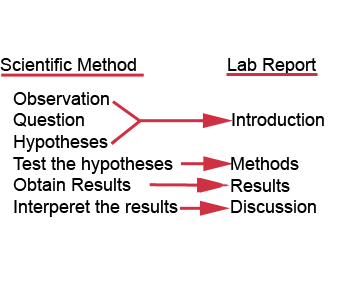Welcome to Introductory Biology’s Guide to Writing Lab Reports
Welcome to our guide to writing lab reports for introductory biology. We realize that many of you have never had to write a lab report in the scientific style, and therefore many students in our introductory courses perform poorly on these exercises. This guide has been created to help you understand how scientific lab reports are structured, why they are structured that way, and what information should go into each section. It also provides many helpful hints for not only making sure you present all of your relevant work in your lab report, but also ways to go about writing it. Learning to write lab reports will become more important as you move into upper-level biology courses, so it is imperative that you start honing your skills now. Please keep in mind that this guide does not cover every detail. If you have any questions, you should ask your TA for help.Structure of a Lab Report
Many people picture scientists as antisocial nerds who stay in their labs and never communicate with each other and the general public. However, science would be pointless if all of those valuable observations, ideas, and data are not communicated to the public. Typically, scientists communicate with one another and with the public at large through talks, poster presentations, and most importantly, papers. As a science student, you should learn how to communicate with your instructor and peers through lab reports that are similar to scientific papers.
Luckily, scientists (and publishers) like to use consistent formats for communication, and tend to stick to the scientific method. Therefore, the flow from section to section in a lab report should be more familiar to you than you might think.

This site makes use of popups for some of the material. Be sure that you set your browser to allow popups for this site.
 Guide to Scientific Writing
Guide to Scientific Writing